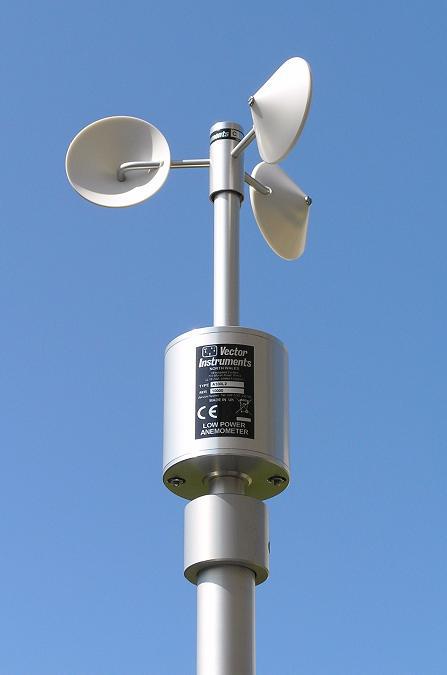Picking the Right Anemometer: A Comprehensive Buying Overview
Picking the Right Anemometer: A Comprehensive Buying Overview
Blog Article
Anemometers Introduced: Recognizing Their Value in Ecological Surveillance and Safety Measures
The duty of anemometers in environmental surveillance and safety and security measures is frequently underestimated, yet their value is obvious. From weather forecasting to aviation safety and security, anemometers play a vital role in providing accurate data that educates decision-making procedures and enhances general security.
Background of Anemometers
The development of anemometers can be mapped back to the ancient civilizations where rudimentary wind determining devices were very first made use of. These early wind measurement tools laid the structure for the growth of a lot more innovative anemometers with time. Among the earliest known anemometers was the hemispherical cup anemometer developed by Leon Battista Alberti in the 15th century. This design consisted of 4 hemispherical cups that accumulated wind energy, offering a dimension of its strength based on the speed of rotation.
In the 18th century, the prominent scientist John Thomas Romney Robinson introduced the Robinson anemometer, which featured 4 hemispherical mugs mounted on horizontal arms that prolonged from a central axis. This style came to be a criterion in atmospheric measurements because of its precision and dependability. For many years, advancements in technology led to the advancement of even more contemporary anemometers, consisting of ultrasonic anemometers and laser Doppler anemometers, supplying enhanced accuracy and performance in gauging wind rate and instructions. The background of anemometers showcases an exceptional journey of innovation and progress in the field of weather forecasting.
Sorts Of Anemometers
Throughout the area of weather forecasting, numerous sorts of anemometers have actually been established to accurately determine wind speed and direction. One of the most typical type is the cup anemometer, which is composed of 3 or four mugs mounted on horizontal arms that rotate with the wind. As the mugs spin, the rate at which they turn is directly proportional to the wind rate. Another widely used kind is the vane anemometer, which features a tail or fin that straightens itself with the wind direction. This positioning allows the tool to figure out the wind direction. Sonic anemometers use ultrasonic signals to determine wind speed and instructions precisely. They are commonly utilized in research study applications due to their high accuracy. Hot-wire anemometers operate based upon the concept that the cooling impact of wind on a heated cable is proportional to the wind rate. These anemometers appropriate for gauging low wind rates with high accuracy. Each sort of anemometer has its strengths and is selected based on the details demands of the surveillance task handy.
Applications in Meteorology
Having discussed the different kinds of visit this site anemometers used in meteorology for gauging wind speed and instructions, it is vital to discover their sensible applications in the field. Anemometers play a crucial role in meteorology by providing real-time and accurate information on wind problems (anemometer). Meteorologists use anemometers to check wind rate and instructions to forecast climate patterns, issue cautions for extreme weather occasions like tornados, typhoons, and tornadoes, and evaluate weather for air travel safety
In weather forecasting, anemometers assist in understanding regional and local wind patterns, which are vital for forecasting weather modifications and identifying climatic fads. These gadgets are additionally used in research study to study microclimates, metropolitan warm islands, and air contamination dispersion. In addition, anemometers are used in farming to maximize plant management practices, such as watering and chemical application, based upon wind problems.
Significance in Aeronautics Safety And Security
An essential facet of making certain air travel safety and security lies in the careful tracking look at this now of wind problems utilizing anemometers. Anemometers play a vital duty in aeronautics by providing real-time data on wind rate and instructions, assisting pilots in making educated decisions throughout landing, liftoff, and trip. Strong and unpredictable winds can substantially affect airplane procedures, making it important for aeronautics authorities to count on precise wind measurements to guarantee the safety and security of guests and staff.

In the vibrant setting of air travel, where even minor adjustments in wind speed and direction can have profound effects, anemometers stand as vital tools for promoting risk-free and safe air travel.
Function in Environmental Research Study
Anemometers play an essential function in ecological research study by giving crucial information on wind rate and direction. By accurately determining wind qualities, anemometers assist researchers evaluate the activity of pollutants in the air, assess the impact of industrial discharges, and forecast the spread of pollutants in the environment.


Conclusion
In final thought, anemometers have actually played a critical role in environmental tracking and safety actions. Comprehending the importance of anemometers is vital for accurately determining wind rate and instructions, which is important for predicting climate patterns, making certain secure aviation operations, and performing environmental studies.
One of the earliest well-known anemometers was the hemispherical mug anemometer created by Leon Battista Alberti in the 15th century. Over the years, innovations in technology led to the growth of more modern anemometers, including ultrasonic anemometers and laser Doppler anemometers, using boosted precision and effectiveness in gauging wind speed and instructions. Hot-wire anemometers run based on the principle that the cooling result of wind on a heated cord is symmetrical to the wind speed. Meteorologists utilize anemometers to keep track of wind rate and instructions to anticipate weather condition patterns, concern warnings for serious weather condition events like storms, twisters, and tornados, and assess climatic conditions for aviation security.
Recognizing the significance of anemometers is important for properly determining wind speed and direction, which is crucial for predicting weather patterns, making sure secure air travel operations, and conducting ecological studies. (anemometer)
Report this page